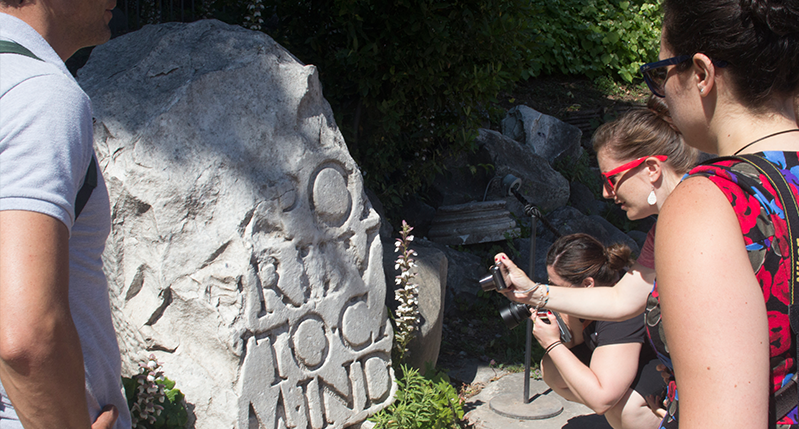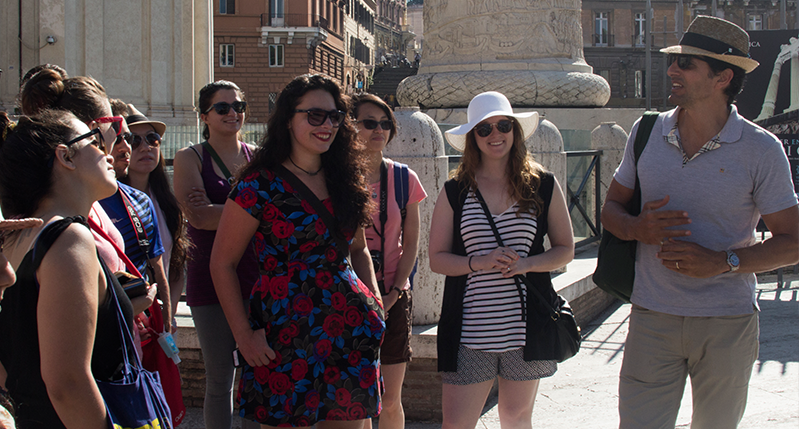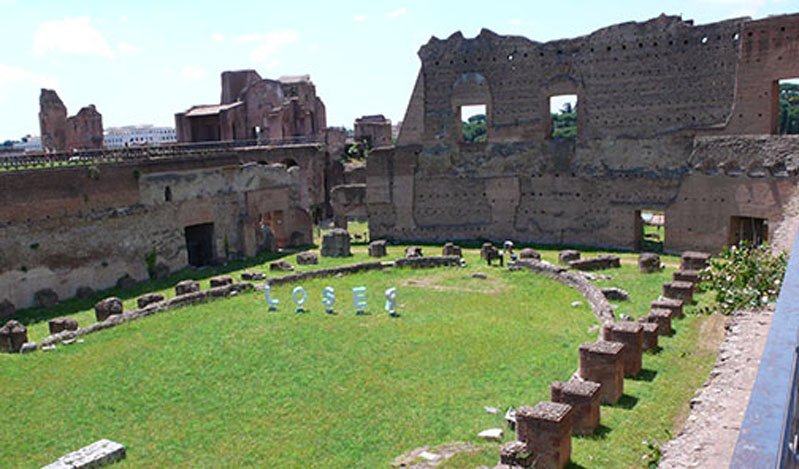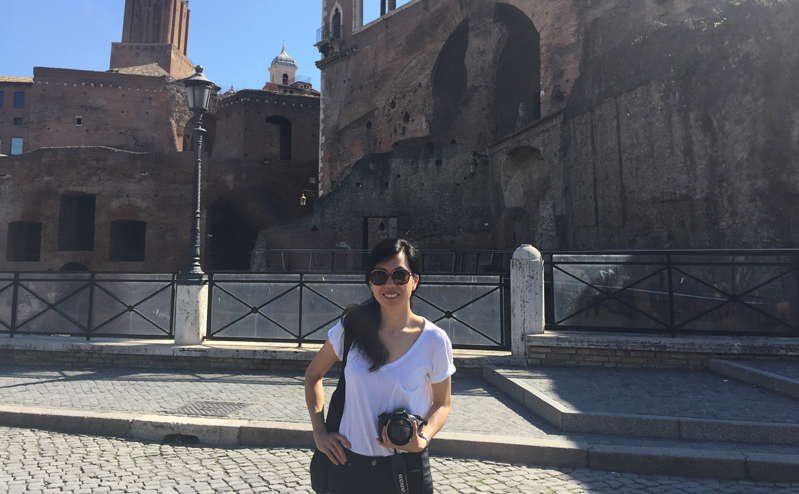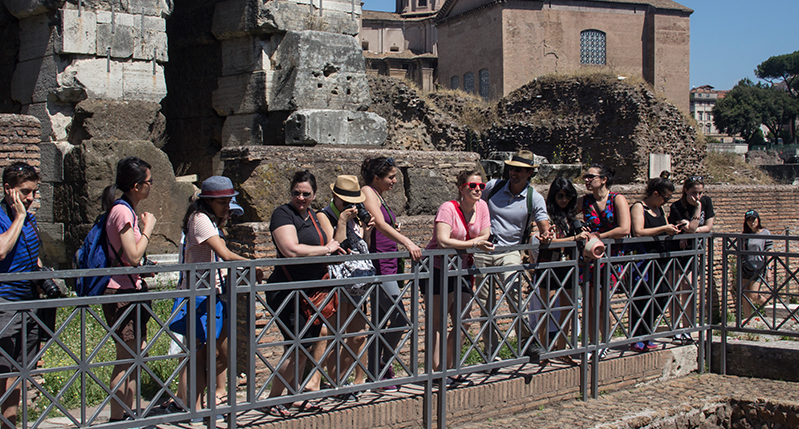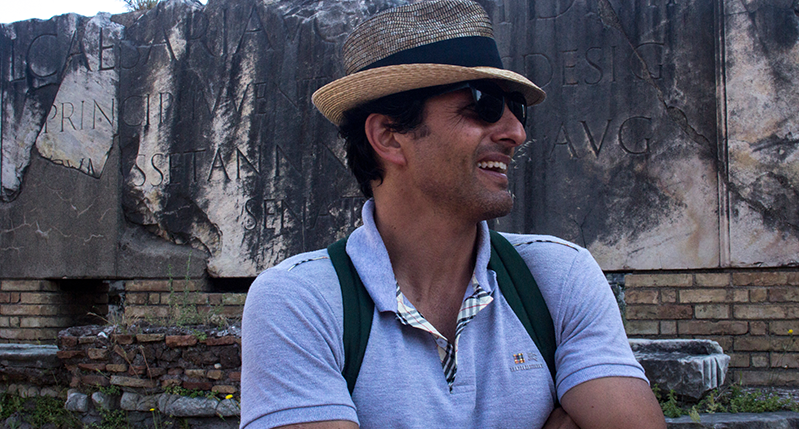Roma Day 9: Walk Through Time With Dr. Darius Arya
Photos by Esther Ro-Schofield, Lita Talarico, Lori Young
By Lori Young
Dr. Darius Arya or Dar, is one active individual and Lita was not kidding when she said it would be a fast walking day. We met him at the Trajan Column where he talked briefly about the communicative value of the column, a visual dialog and written record of what had happened in the past. Roughly 2500 images tell the story of Rome’s conquest, Trajan’s defeat of Dacia. This column was once beautifully painted and held the ashes of Trajan and his wife. The sun has bleached it white and a statue of St. Peter, the patron saint of Rome, replaced Trajan at the top. Lita pointed out the Rome letters at the base of the column and reminded us that these were the roots of western typography. Unfortunately, we could not get a closer view of the base of the column as it appeared the maintenance crew was mowing the lawn, of all days.
Dar gave a quick overview of the imperial forums as we walked down the Via Del Fori Imperial; Julius Caesar (46 B.C.), Augustus, (2 B.C.), Vespasian (A.D. 75), Nerva (A.D 97) and Trajan (A.D 112). Though little could be seen from the ruins around us, these forums were once active places with temples, government buildings, statues, monuments and markets. Though the spaces around us were open, at one time many were covered and sheltered from the sun, something all of us would’ve appreciated during our lengthy trek. (image)
We entered the forum and with a whirlwind of activity we walked by the Basilica Aemilia, the Forum’s main square, Temple of Saturn, Arch of Septimius Severus, before walking into the rarely opened Santa Marie Antique Church. The Arch was an impressive display of ornament and typography. Dar explained that the deeply engraved type accompanied by holes in the stone were all that remained of the bronze letters that once adorned this space. This is a fairly common practice to remove metal and fire old stone into lime (the major component for cement) to build the new spaces that each new, for lack of a better word, authority needed. Just past the Arch of Septimius was an area cut away from the bed rock and one of the oldest sites. This was an alter to the God of Vulcan (the time of Romulus) where people would offer the first fruits of the harvest
We walked into the Santa Marie Antique Church and marveled at that layers of frescos from 6th-9th centuries. An impressive site, considering it is one of the earliest sites of Medieval and Byzantine Christian art in Rome. The group walked around court yard of the house of the Vestal Virgins (power players of the day) on its way to climb the steps to Palatine Hill. Once on top we walked through the Farnese Gardens to look out over the Forum, a beautiful view. The Imperial Palace was an immense area and still be excavated. We took in views of the Octagonal fountain, Circus Maximus, and the Stadium where apparently, even “Guerilla” artists like to display their work. (image)
At the Arch of Titus, Dar said, “Just shift 50 feet and get a completely new view of Rome.” This was certainly true throughout our walk today, an amazing visual blend of ancient and modern life anywhere we cared to look.


